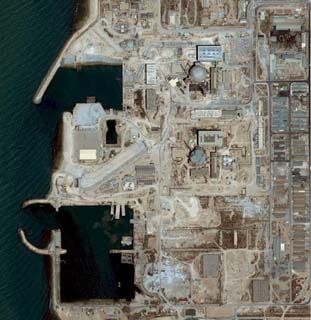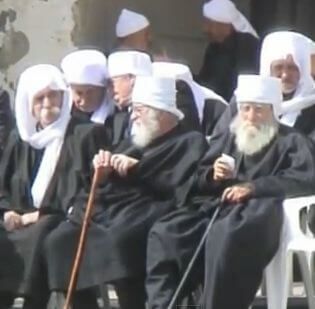 Everything you need to know about today’s media coverage of Israel and the Mideast.
Everything you need to know about today’s media coverage of Israel and the Mideast.
Was Khader Adnan’s hunger strike a victory for Palestinian non-violent resistance? Is the Syrian army’s use of the world’s largest mortar shells against Homs a war crime? And how significant are budding Golan Druze protests against Assad?
Join the Media Cheat Sheet Page on Facebook.
Israel and the Palestinians
• Everybody picked up on Khader Adnan ending his hunger strike. Take your pick of NY Times, BBC, or AP.
• In a NY Times op-ed, Mustafa Barghouti declares Khader Adnan’s hunger strike a victory for Palestinian non-violence.
Iranian Atomic Urgency

• In a Times of London column (paywall), Anatole Kaletsky argues against an Israeli strike on Iran. After sifting through various issues, Kaletsky concludes on this surprising note:
Israel, with a population of only seven million, would proclaim by its actions that it considers the hundreds of millions of Muslims living around it as permanent and implacable military enemies. It is this attitude, far more than any nuclear programme, that poses the real “existential threat” to Israel’s long-term survival.
Uh, Ahmadinejad hasn’t made repeated calls to wipe out the hundreds of millions of Muslims living around Israel.
But if it’s any consolation to Kaletsky, he’s joined in fretting by Seumas Milne (The Guardian print edition) and by the tag team of Richard Silverstein and Muhammad Sahimi (Christian Science Monitor).
• Jerusalem’s conundrum: By being too vocal with the US about stepping up pressure on Iran, Israel risks “owning” the problem. Former diplomat Itamar Rabinovich‘s advice?
Israel would therefore be wise to reinforce its pressure on the US administration with a broader diplomatic campaign. Like it or not, Israel must urge the world to remember that Iran is everyone’s problem.
Arab Spring Winter
• New details on Syrian war crimes emerge as rights groups say Assad is using the world’s largest shells against Homs. The Christian Science Monitor writes:
From Peter Bouckaert, a senior researcher for Human Rights Watch, comes an indication why the death toll has been steadily climbing in Homs. He says a video from Homs that shows the fragments of a mortar the struck a building there is proof that Assad has deployed the Russian-made “Tulip” weapons system against the town, which fires the largest mortar round in any military’s arsenal. The tank-like vehicle that serves as the firing platform can lob 240mm mortar rounds up to 20 kilometers away, and they carry over 70 pounds of explosives. The largest mortar used by the US, in contrast, is 160mm . . . .
The Tulip was designed for use against dug in positions from a standoff distance. But its lethality has been used in the past to bring devastation to civilian neighborhoods, most famously by the Russians during the siege of the Chechen capital of Grozny over a decade ago, where thousands of civilians were killed and hundreds of buildings reduced to rubble. The use of such weapons in dense urban environments is a war crime.
• Reuters reports two Western journos killed in the shelling of Homs today. Marie Colvin, a US national, was a correspondent for the Sunday Times of London. In the 80s and 90s, she was the Times’s Jerusalem correspondent. The shelling also killed French photographer Remi Ochlik and injured two other journalists. According to AFP, 31 civilians were killed on Tuesday.
• A Syrian blogger who posted on YouTube graphic images from Homs was killed in an arm shelling. The Lede has lots of links and video about Rami al-Sayed.
• A Times of London staff-ed wants Bashar Assad prosecuted for crimes against humanity in Homs.
• Elliott Abrams: It’s time to make Assad’s ouster a US policy goal and “encourage the arming and funding of the opposition.”
The problem is that our speeches and even our sanctions have not helped defend the people of Syria against Assad’s bullets . . .
Because the real questions in Syria now are who will win and how long will this take. We ought to find an Assad victory (or perhaps one should say an Assad, Russian, Chinese, Iranian, and Hezbollah victory) unacceptable. Moreover, we should avoid the false moral equivalence that leads people to say, “Oh, don’t arm anyone, just call for a ceasefire.” As in Darfur or Kosovo, such calls are in reality an abandonment of people fighting against oppression.

• These protests may be small in comparison to other places, but AP finds Golan’s Druze community starting to openly demonstrate against Assad:
But the very act of stepping into the square is a major departure for the Golan’s 20,000-member Druse community, which historically has been extremely reluctant to openly criticize the autocratic Assad family that has ruled Syria for the past four decades.
Some, particularly older residents who remember the days of Syrian rule, maintain a strong affinity for Syria. Others feared they might be harmed if the territory is ever returned to Syria, or had concerns that the Syrian regime would retaliate against relatives across the frontier.
But faced with the mounting scope of carnage in Syria, where thousands of people, mostly civilians, are believed to have been killed in an 11-month uprising against Assad, small numbers of Golan Druse are bringing their criticism out in the open.
• Hmmmm. According to the WSJ, Iraqi tribes are in a bind over helping kinsmen on the Syrian side of the border fight Assad.
But their leaders worry that an expanding cross-border arms trade here is re-energizing a radical group they say they have only just brought under relative control—al Qaeda in Iraq.
• Lenny Ben-David: Syria’s arsenal of unconventional weapons must be destroyed.
Rest O’ the Roundup
• Voice of America tours the Israel-Egypt border fence under construction.
(Image of Tulip via YouTube/Gromoslawski; Druze via YouTube/TheVJMovement)
For more, see yesterday’s Media Cheat Sheet.

